
Jacobitism was a political movement that supported the restoration of the senior line of the House of Stuart to the British throne. The name derives from the first name of James II and VII, which in Latin translates as Jacobus. When James went into exile after the November 1688 Glorious Revolution, the Parliament of England argued that he had abandoned the English throne, which they offered to his Protestant daughter Mary II, and her husband William III. In April, the Scottish Convention held that he "forfeited" the throne of Scotland by his actions, listed in the Articles of Grievances.

1746 (MDCCXLVI) was a common year starting on Saturday of the Gregorian calendar and a common year starting on Wednesday of the Julian calendar, the 1746th year of the Common Era (CE) and Anno Domini (AD) designations, the 746th year of the 2nd millennium, the 46th year of the 18th century, and the 7th year of the 1740s decade. As of the start of 1746, the Gregorian calendar was 11 days ahead of the Julian calendar, which remained in localized use until 1923.

The Battle of Culloden was the final confrontation of the Jacobite rising of 1745. On 16 April 1746, the Jacobite army of Charles Edward Stuart was decisively defeated by a British government force under Prince William Augustus, Duke of Cumberland, on Drummossie Moor near Inverness in the Scottish Highlands. It was the last pitched battle fought on British soil.
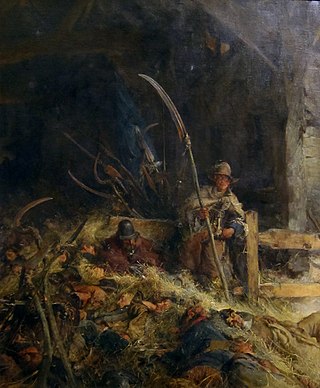
The Battle of Sedgemoor was the last and decisive engagement between the Kingdom of England and rebels led by the Duke of Monmouth during the Monmouth rebellion, fought on 6 July 1685, and took place at Westonzoyland near Bridgwater in Somerset, England, resulting in a victory for the English army.

The Battle of Prestonpans, also known as the Battle of Gladsmuir, was fought on 21 September 1745, near Prestonpans, in East Lothian, the first significant engagement of the Jacobite rising of 1745.

The Battle of Preston was the final action of the Jacobite rising of 1715, an attempt to put James Francis Edward Stuart on the British throne in place of George I.
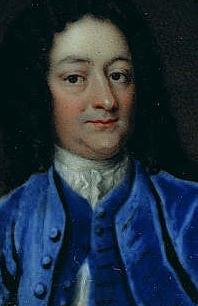
Henry Hawley was a British army officer who served in the wars of the first half of the 18th century. He fought in a number of significant battles, including the Capture of Vigo in 1719, Dettingen, Fontenoy and Culloden.
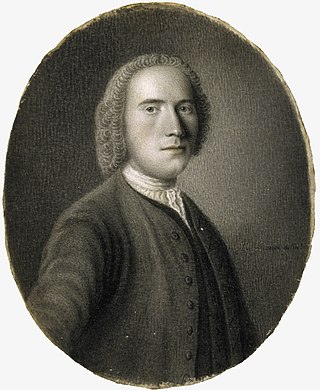
Lord George Murray, sixth son of John Murray, 1st Duke of Atholl, was a Scottish nobleman and soldier who took part in the Jacobite rebellions of 1715 and 1719 and played a senior role in that of 1745.

Clan Chisholm is a Highland Scottish clan.

The MacDonalds of Glencoe, also known as Clann Iain Abrach, was a Highland Scottish clan and a branch of the larger Clan Donald. They were named after Glen Coe. the MacDonalds of Glen Coe have resided in Glen Coe since at least the early 14th century, when they supported King Robert the Bruce.

The Clifton Moor Skirmish took place on the evening of Wednesday 18 December during the Jacobite rising of 1745. Following the decision to retreat from Derby on 6 December, the fast-moving Jacobite army split into three smaller columns; on the morning of 18th, a small force of dragoons led by Cumberland and Sir Philip Honywood made contact with the Jacobite rearguard, at that point commanded by Lord George Murray.
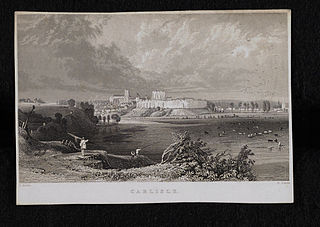
The siege of Carlisle took place from 21 to 30 December during the Jacobite rising of 1745, when a Jacobite garrison surrendered to government forces led by the Duke of Cumberland.

The military history of the United Kingdom covers the period from the creation of the united Kingdom of Great Britain, with the political union of England and Scotland in 1707, to the present day.

The Jacobite rising of 1745, also known as the Forty-five Rebellion or simply the '45, was an attempt by Charles Edward Stuart to regain the British throne for his father, James Francis Edward Stuart. It took place during the War of the Austrian Succession, when the bulk of the British Army was fighting in mainland Europe, and proved to be the last in a series of revolts that began in 1689, with major outbreaks in 1708, 1715 and 1719.

The Manchester Regiment was a Jacobite unit raised during the 1745 Rebellion and the only significant number of English recruits willing to fight for Charles Edward Stuart in his attempt to regain the British throne for his father. Raised in late November 1745, the majority were captured in December at Carlisle; eleven officers and sixteen members of the rank and file were executed in 1746, over a quarter of all those executed for their role in the Rising.

Lieutenant-General Peregrine Lascelles (1685–1772), also spelt Lascells, was a British military officer from Yorkshire.
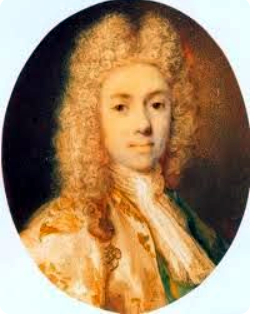
William Murray, Marquess of Tullibardine was a Scottish nobleman and Jacobite who took part in the rebellions of 1715, 1719, and 1745.
Events from the year 1745 in Scotland.

Duncan Forbes of Culloden was a Scottish lawyer and Whig politician who sat in the House of Commons from 1721 to 1737. As Lord President and senior Scottish legal officer, he played a major role in helping the government suppress the 1745 Jacobite Rising.

An Incident in the Rebellion of 1745 is an oil painting, by the Anglo-Swiss artist David Morier. It is part of the art collection of the British royal family. It depicts a scene during the 1746 Battle of Culloden, in which a group of Jacobite Scottish Highland soldiers charge a group of soldiers of the government army of Great Britain.
















